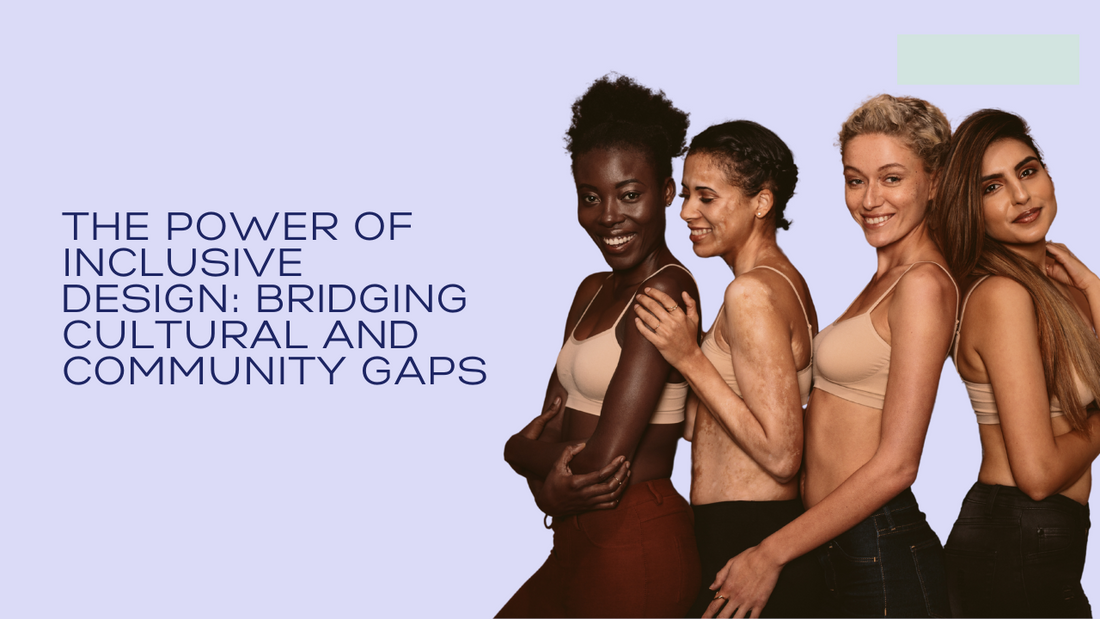
The Power of Inclusive Design: Bridging Cultural and Community Gaps
In today's globalized world, fashion is more than just an aesthetic choice; it's a powerful tool for communication and expression. With diverse cultures, backgrounds, and personal styles, it's essential that design reflects inclusivity and embraces a wide spectrum of identities. Inclusive design is no longer just a trend—it’s a necessity for any brand or industry that wants to stay relevant and impactful.
What is Inclusive Design?
Inclusive design is the practice of creating products, experiences, and spaces that are accessible to as many people as possible. It goes beyond simply catering to one demographic; it involves designing with diversity in mind. This can include factors such as age, gender, race, ability, and cultural heritage. In fashion, inclusive design ensures that everyone, regardless of their body type, ethnicity, or socio-economic background, can find something that makes them feel represented and confident.
Why is Inclusive Design Important?
Inclusive design isn’t just about accessibility; it’s about empowerment. It sends a message that no matter who you are or where you come from, your identity and your preferences matter. Fashion has the unique ability to shape self-image and confidence, and inclusive design makes sure that no one is left behind in this transformative experience.
1. Bridging Cultural Gaps
In a world where we are constantly interacting with people from different cultures and traditions, fashion plays an essential role in creating mutual respect and understanding. Inclusive design acknowledges cultural nuances and honors the diversity of identities that exist globally. For example, a brand that incorporates modest fashion choices into its collection bridges the gap between Western trends and Eastern traditions, creating a space where both can coexist. Similarly, fashion that is mindful of regional fabrics, techniques, and colors fosters cultural pride while respecting the unique needs of different communities.
As we continue to see the blending of global trends with local influences, inclusive design in fashion becomes a medium to celebrate diverse cultural heritages. It allows people from various backgrounds to feel acknowledged, valued, and included, contributing to the rich tapestry of global fashion.
2. Celebrating Diversity in Body Types
For years, the fashion industry has been criticized for promoting a narrow definition of beauty, often leaving many people feeling excluded. Inclusive design seeks to address this by creating clothing that caters to a wide range of body types. Whether through extended size ranges, body-positive cuts, or designs that flatter different shapes, inclusive fashion is about celebrating the beauty in all forms.
Body diversity is an integral part of inclusive design. By embracing different body shapes, fashion helps individuals feel more confident and at ease in their skin. When people see themselves reflected in the clothing they wear, it’s not just about the fabric—it’s about being seen and validated.
3. Gender Inclusivity and Expression
Another significant aspect of inclusive design is its approach to gender inclusivity. Fashion has often been segmented into rigid categories—men’s and women’s clothing—with little room for flexibility. However, the growing recognition of non-binary, transgender, and gender-fluid identities has led to the demand for more inclusive designs. Fashion brands now increasingly create gender-neutral clothing that prioritizes comfort, fit, and personal expression over traditional gender norms.
This shift towards gender inclusivity is transforming fashion from a tool of restriction to one of empowerment, allowing individuals to express themselves freely without the constraints of traditional gender roles. This is where inclusive design truly shines—by offering options that allow people to define their style on their own terms.
4. Community Engagement and Collaboration
Inclusive design also extends to how brands engage with their communities. The rise of community-driven fashion is a direct result of the demand for inclusivity. Brands now collaborate with diverse groups, from different socio-economic backgrounds to underrepresented cultural communities, to ensure their designs are reflective of the needs and desires of the people who wear them.
Through feedback, partnerships, and open dialogues, brands can learn about the unique challenges faced by various communities and respond by creating products that are both practical and thoughtful. When consumers are involved in the design process, they feel a sense of ownership and connection to the brand, fostering trust and loyalty.
5. Empowering Marginalized Communities
One of the most powerful outcomes of inclusive design is its ability to uplift marginalized communities. Whether it’s through supporting local artisans, promoting ethical labor practices, or providing a platform for underrepresented voices, inclusive design encourages a more equitable and diverse industry. It ensures that no group is left behind, whether it’s by creating fair wages for garment workers or producing designs that celebrate the cultural identities of those often sidelined.
Inclusive design in fashion is also a means of breaking stereotypes. Fashion has the ability to challenge and deconstruct societal norms, allowing people from historically marginalized groups to express themselves in ways that were previously out of reach. By making fashion accessible to all, we are ultimately working towards a more just and equal society.
The Future of Fashion: A More Inclusive World
The future of fashion lies in its ability to continue embracing inclusivity. With an increasing demand for diverse designs that reflect the multifaceted world we live in, inclusive design is set to reshape the industry. As more brands recognize the importance of inclusivity, the fashion world will become a more welcoming and empowering space for everyone.
Inclusive design allows us to move away from the notion that fashion is just for a select few. Instead, it redefines what it means to be fashionable—one that is truly for everyone. As the fashion industry continues to evolve, it’s clear that inclusivity will not just be a passing trend, but an enduring value that bridges cultural and community gaps for generations to come.
